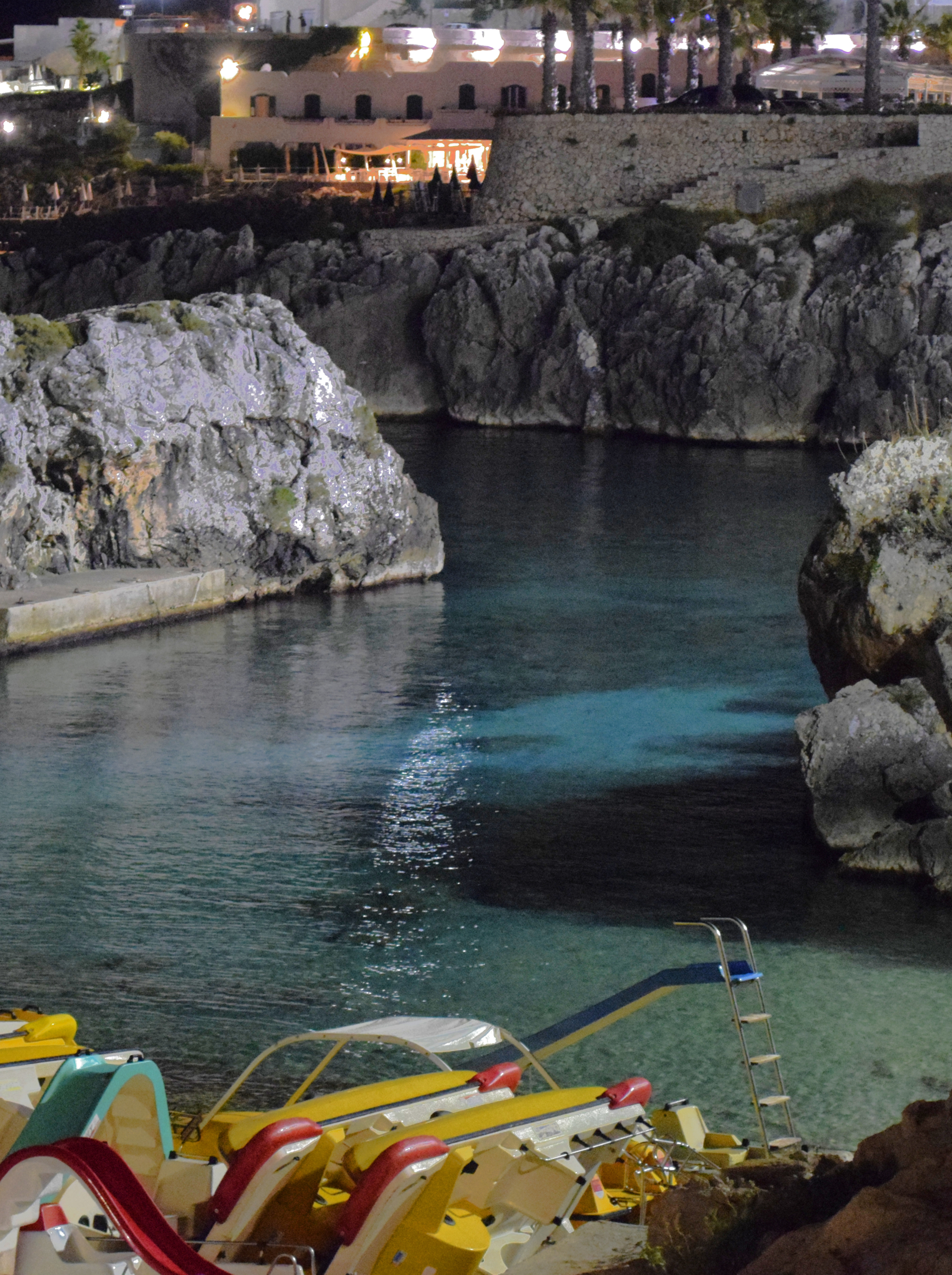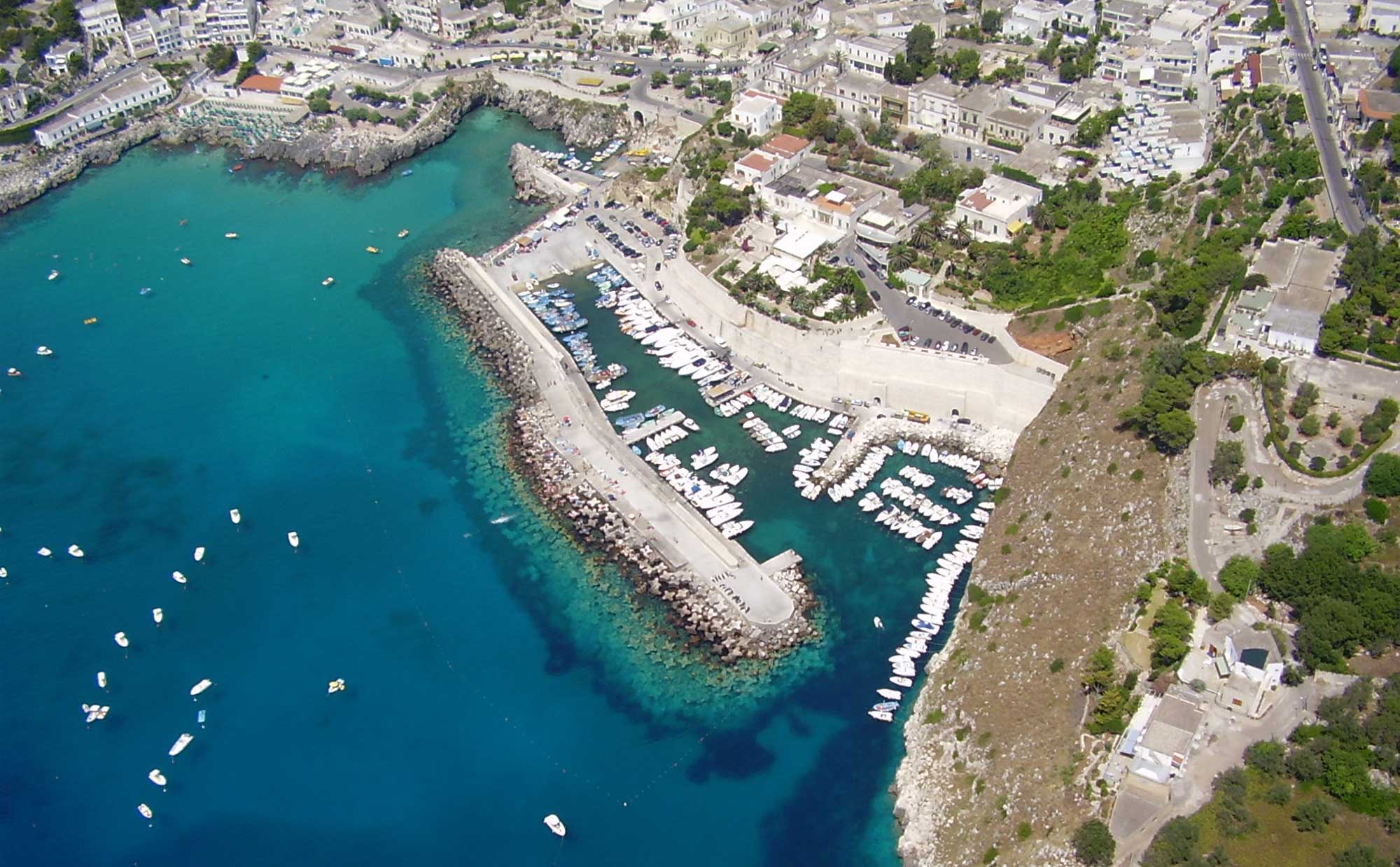CASTRO, IN SALENTO
The ancient Castrum Minervae, a Roman military outpost, corresponds to the current city of Castro, a municipality of 2,426 inhabitants in the Province of Lecce (Puglia, Italy).
The municipal territory, located along the eastern coast of the Salento peninsula, is divided between the main inhabited area (Castro Alta) of which the valuable medieval village survives, located on a promontory at 98 m above sea level, and the lower part (Castro Marina), built around the marina.
Seaside center with a strong maritime vocation, linked to fishing traditions, it boasts ancient origins as the heir of the Roman Castrum Minervae. The territory of the city is embellished by cave sites that are unique in the world from a biological and karst point of view, such as Grotta Zinzulusa and Grotta Romanelli, which have yielded extraordinary archaeological evidence from the prehistoric age. The promontory of the city (Punta Mucurune) was already fortified in the 2nd millennium BC. C. and has been permanently populated, albeit with varying fortunes, until today.
The ancient site experienced moments of splendor under the Messapians, playing an important role as an emporium equipped with a port; Roman colony, after the war against Taranto, retained all its mercantile and strategic importance for the control of the Strait of Otranto (the Ionos Poros for the Greeks), even in the Byzantine age.
In the Middle Ages it was the seat of a diocese and a county, governing a large territory with numerous hamlets. The Diocese and County were suppressed in the early 19th century.
The Municipality, autonomous since 1978, has recovered its historical, architectural and monumental heritage and has numerous archaeological excavation campaigns underway, in collaboration with the University of Salento.
Renowned tourist and seaside resort for decades, it has been awarded the coveted European Blue Flag for 8 years and the 5 and 4 Sails of Legambiente in the last 2 years and was elevated to the title of “City” by decree of 20 June 2017 of President of the Republic Mattarella, for “memories, historical monuments and current importance”, on the report of the Minister of the Interior.
It boasts a twinning with the city of Edremit in Turkey, by virtue of the recognition of Castro as the landing place of the legendary Homeric hero Aeneas, in the third book of the Aeneid.


TO ARRIVE THERE
BY CAR
Bari Nord motorway exit
Adriatic highway 16 Bari-Lecce 150 Km
Lecce – Castro 48 Km
ON THE TRAIN
Lecce State Railway Station
To continue by train: Ferrovia Sud-Est Lecce – Poggiardo
To continue by bus: Autolinee S.T.P. of the land of Otranto
BY PLANE
Brindisi Salento Airport
Shuttle to Lecce
CASTRO, IN SALENTO
The ancient Castrum Minervae, a Roman military outpost, corresponds to the current city of Castro, a municipality of 2,426 inhabitants in the Province of Lecce (Puglia, Italy).
The municipal territory, located along the eastern coast of the Salento peninsula, is divided between the main inhabited area (Castro Alta) of which the valuable medieval village survives, located on a promontory at 98 m above sea level, and the lower part (Castro Marina), built around the marina.
Seaside center with a strong maritime vocation, linked to fishing traditions, it boasts ancient origins as the heir of the Roman Castrum Minervae. The territory of the city is embellished by cave sites that are unique in the world from a biological and karst point of view, such as Grotta Zinzulusa and Grotta Romanelli, which have yielded extraordinary archaeological evidence from the prehistoric age. The promontory of the city (Punta Mucurune) was already fortified in the 2nd millennium BC. C. and has been permanently populated, albeit with varying fortunes, until today.
The ancient site experienced moments of splendor under the Messapians, playing an important role as an emporium equipped with a port; Roman colony, after the war against Taranto, retained all its mercantile and strategic importance for the control of the Strait of Otranto (the Ionos Poros for the Greeks), even in the Byzantine age.
In the Middle Ages it was the seat of a diocese and a county, governing a large territory with numerous hamlets. The Diocese and County were suppressed in the early 19th century.
The Municipality, autonomous since 1978, has recovered its historical, architectural and monumental heritage and has numerous archaeological excavation campaigns underway, in collaboration with the University of Salento.
Renowned tourist and seaside resort for decades, it has been awarded the coveted European Blue Flag for 8 years and the 5 and 4 Sails of Legambiente in the last 2 years and was elevated to the title of “City” by decree of 20 June 2017 of President of the Republic Mattarella, for “memories, historical monuments and current importance”, on the report of the Minister of the Interior.
It boasts a twinning with the city of Edremit in Turkey, by virtue of the recognition of Castro as the landing place of the legendary Homeric hero Aeneas, in the third book of the Aeneid.

TO ARRIVE THERE
BY CAR
Bari Nord motorway exit
Adriatic highway 16 Bari-Lecce 150 Km
Lecce – Castro 48 Km
ON THE TRAIN
Lecce State Railway Station
To continue by train: Ferrovia Sud-Est Lecce – Poggiardo
To continue by bus: Autolinee S.T.P. of the land of Otranto
BY PLANE
Brindisi Salento Airport
Shuttle to Lecce





